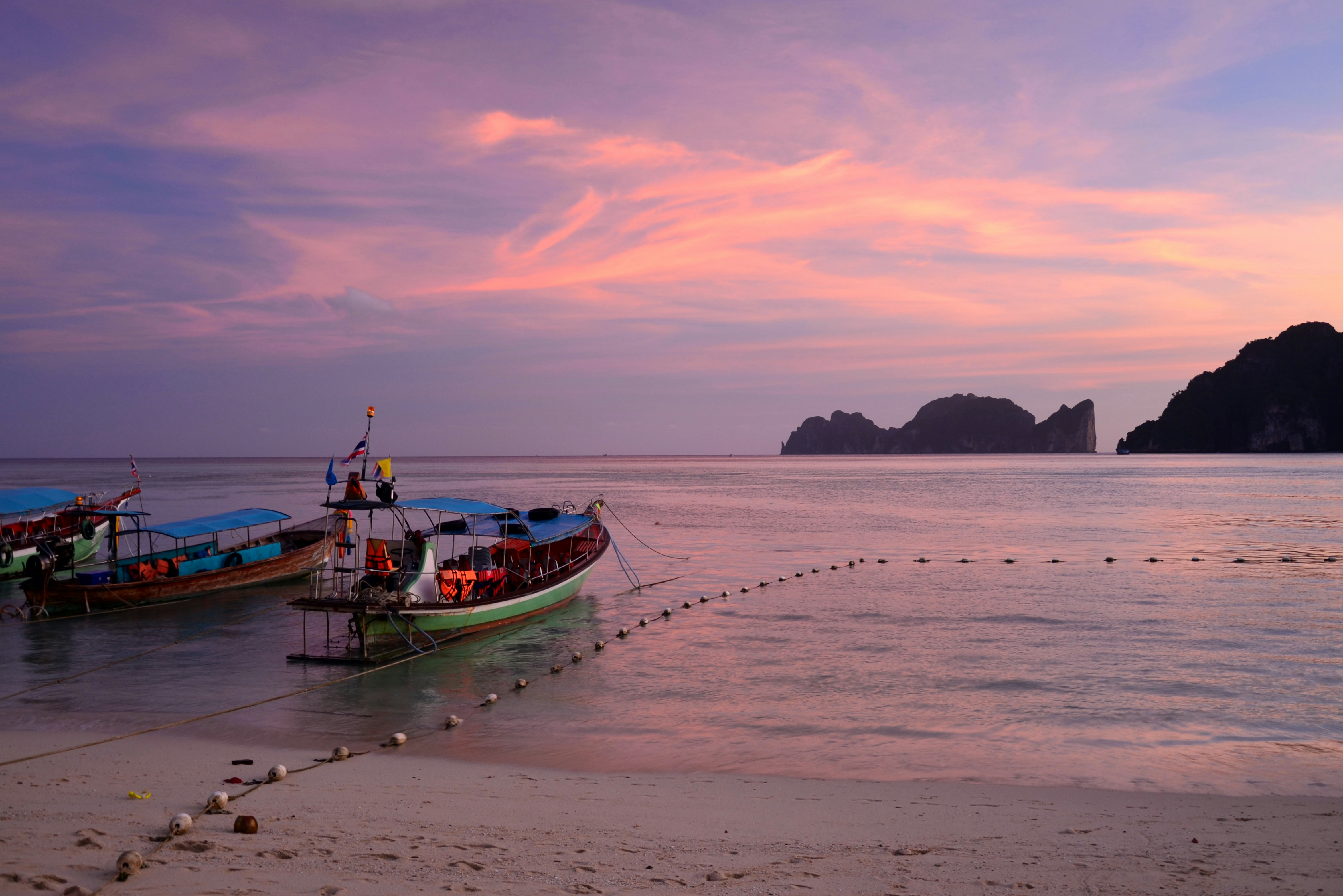Located in the Gulf of Thailand, the tropical paradise of Koh Samui offers visitors a unique blend of natural beauty and vibrant cultural experiences. However, before embarking on a journey to this enchanting island, it is crucial to understand its ever-changing weather patterns. Known for its year-round warm climate, Koh Samui, nestled in the Surat Thani Province, exhibits distinct seasonal variations that can greatly impact travel plans and outdoor activities. From dry, sunny days to monsoon rains and occasional thunderstorms, this article aims to provide an insightful exploration of Koh Samui’s weather, equipping travelers with the necessary knowledge to make the most of their time on this idyllic island.
Seasons in Koh Samui
Hot Dry Season
Koh Samui experiences three distinct seasons throughout the year. The hot dry season, which typically lasts from February to April, is characterized by scorching temperatures and minimal rainfall. During this time, visitors can expect clear blue skies and very little cloud cover. The average temperature during the hot dry season ranges from 29°C to 34°C (84°F to 93°F), making it the ideal time for sunbathing and enjoying water activities such as snorkeling and diving.
Rainy Season
From May to September, Koh Samui transitions into its rainy season. This period is characterized by frequent showers and occasional thunderstorms. While the rainfall can be heavy at times, it usually doesn’t last for long, and the sun often reemerges quickly. The average temperature during the rainy season hovers around 27°C to 31°C (81°F to 88°F), and the island’s lush greenery is at its prime. It’s worth noting that despite the rain, Koh Samui still offers plenty to see and do, with many indoor attractions and activities to enjoy.
Cool Dry Season
From October to January, Koh Samui experiences its cool dry season. This season is milder in terms of temperature and less rainfall compared to the other seasons. The average temperature ranges from 25°C to 29°C (77°F to 84°F), providing a pleasant and comfortable climate for outdoor activities. Additionally, this season boasts lower humidity levels, making it an ideal time for exploring the island’s natural beauty, hiking, and enjoying outdoor adventures.
Temperature in Koh Samui
Average Temperatures
Overall, Koh Samui has a tropical climate, characterized by warm temperatures throughout the year. The island enjoys average temperatures ranging from 26°C to 32°C (79°F to 90°F). It’s essential to note that the temperature can vary slightly depending on the season, with the hottest months being April and May, and the coolest months occurring between December and February.
Hottest Months
The hottest months in Koh Samui are April and May. During this time, temperatures can soar up to 34°C (93°F). It is advisable to take precautions such as applying sunscreen, wearing lightweight and breathable clothing, and staying hydrated to beat the heat. Seek shade, especially during the peak hours of midday when the sun is at its strongest.
Coolest Months
The coolest months in Koh Samui are December and January. During these months, temperatures can drop to around 25°C (77°F). While still pleasant, it’s a good idea to pack some lightweight layers to ensure comfort, particularly during the evenings or if venturing to higher elevations on the island.
Rainfall in Koh Samui
Average Rainfall
Koh Samui receives a significant amount of rainfall, especially during the rainy season. On average, the island experiences between 100mm to 300mm (3.9 to 11.8 inches) of rain per month. The patterns of rainfall are not evenly distributed throughout the year, with the majority of precipitation occurring during the rainy season.
Wettest Months
The wettest months on Koh Samui are typically October and November, when the island experiences the highest levels of rainfall. During these months, it is not uncommon for heavy downpours and occasional thunderstorms to occur. Visitors should be prepared with rain gear and plan indoor activities or visit attractions that are less weather-dependent during this time.
Driest Months
The driest months on Koh Samui tend to be February and March, which fall within the hot dry season. These months see significantly less rainfall, with occasional light showers or drizzles. However, it is important to note that even during the driest months, sudden rain showers can still occur, albeit less frequently.
Humidity in Koh Samui
Humidity Levels
Koh Samui experiences consistently high levels of humidity throughout the year due to its tropical climate. On average, humidity levels hover around 70% to 80%, which can make the heat feel more intense. It is advisable to dress in lightweight, breathable clothing and stay hydrated to mitigate the effects of the humidity.
Most Humid Months
The most humid months in Koh Samui are typically during the rainy season, from May to September. The combination of rainfall and high temperatures can result in a muggy and sticky atmosphere. Visitors should plan activities that offer relief from the humidity, such as visiting air-conditioned indoor attractions or enjoying water-based activities like swimming or kayaking.
Least Humid Months
The least humid months in Koh Samui are during the cool dry season, from October to January. These months experience slightly lower humidity levels, providing a more comfortable climate for outdoor exploration. It’s a fantastic time to hike through Koh Samui’s lush rainforests or enjoy a leisurely stroll along the island’s picturesque beaches without feeling overwhelmed by humidity levels.

Sunshine Hours in Koh Samui
Hours of Sunshine
Koh Samui boasts abundant sunshine hours throughout the year, especially during the hot dry season. On average, the island experiences approximately 8 to 9 hours of sunshine per day. This ample sunshine provides visitors with ample opportunities to soak up the tropical rays, indulge in beach activities, and explore the island’s natural beauty.
Sunniest Months
The sunniest months on Koh Samui coincide with the hot dry season, particularly from February to April. During these months, visitors can expect clear blue skies and a higher concentration of sunshine hours, making it an ideal time for outdoor pursuits and beach-related activities.
Least Sunny Months
The least sunny months on Koh Samui tend to be during the rainy season, from May to September. While the sun does make appearances, it may be obscured by cloud cover during these months. However, this should not deter visitors from exploring the island, as there are still plenty of attractions and activities that can be enjoyed indoors or during breaks in the rainfall.
Wind in Koh Samui
Wind Patterns
Koh Samui experiences varying wind patterns throughout the year. During the hot dry season and cool dry season, the island experiences relatively calm winds, making it an ideal time for water activities. However, during the rainy season, there is an increase in wind speed, particularly during thunderstorms and squalls. Visitors should heed local weather advisories and exercise caution when engaging in activities such as boating or water sports during this period.
Windy Months
The windiest months in Koh Samui typically occur during the rainy season, from May to September. During this period, strong gusts of wind can accompany rain showers and thunderstorms. It is advisable to check weather forecasts before planning any outdoor activities to ensure a safe and enjoyable experience.
Calmer Months
The calmer months for wind in Koh Samui are during the hot dry season and cool dry season, from February to April and October to January, respectively. During these months, the wind speeds are generally mild, providing pleasant conditions for various outdoor pursuits.
Tropical Storms in Koh Samui
Cyclones and Typhoons
Koh Samui is situated in a region that can be occasionally affected by tropical storms, including cyclones and typhoons. However, the island is generally sheltered from direct hits due to its location in the Gulf of Thailand. Nevertheless, it is still crucial for visitors to stay informed about weather advisories and heed any warnings issued by local authorities during the storm season, which runs from May to November.
Historical Data
Historical data indicates that Koh Samui has avoided the brunt of major tropical storms. While the island may experience some residual effects from nearby storms, severe damage and direct impacts are rare. The tourism industry has implemented measures to ensure the safety of visitors, such as storm shelters and emergency protocols, in the unlikely event of a significant storm or typhoon.
Precautions
When visiting Koh Samui during the storm season, it is advisable to have a contingency plan in case of inclement weather. This may include checking travel insurance policies, staying updated on weather forecasts and advisories, and following instructions from local authorities or hotel staff regarding safety procedures. It’s important to remain flexible and adaptable to changing weather conditions to ensure a safe and enjoyable stay on the island.
Best Time to Visit Koh Samui
Ideal Months
The ideal months to visit Koh Samui are generally during the hot dry season, from February to April. These months offer the perfect combination of blue skies, sunshine, and warm temperatures, making it the peak tourist season. Visitors can enjoy outdoor activities, lounging on pristine beaches, and exploring the vibrant marine life of the surrounding waters.
Avoiding Crowds
For those who want to avoid crowds and peak season prices, the cool dry season months, particularly October and November, offer a wonderful alternative. During this time, visitors can still experience favorable weather conditions, albeit with slightly higher chances of rainfall. Additionally, the island feels less crowded, allowing for a more peaceful and authentic experience.
Activities and Festivals
Koh Samui hosts various activities and festivals throughout the year, which may influence the choice of travel dates for visitors. The island’s events calendar includes the Samui Regatta, the Ten Stars Samui Art Party, the Samui Festival, and the Buffalo Fighting Festival. Visitors may choose to plan their trip around specific events to immerse themselves in the local culture and vibrant festivities.
Planning for Koh Samui’s Weather
Weather Forecast
It is essential to stay updated on the weather forecast while planning a trip to Koh Samui. Reliable weather forecasting websites or mobile applications can provide detailed information about expected temperatures, rainfall, and wind conditions during specific dates. By having access to accurate weather information, travelers can make informed decisions about their itinerary and pack accordingly.
Packing Essentials
When packing for a trip to Koh Samui, it’s important to include items suitable for the prevailing weather conditions. Essentials may include lightweight and breathable clothing, swimwear, sun hats, sunscreen, insect repellent, and comfortable footwear for beach and outdoor activities. It is also advisable to pack a lightweight rain jacket or umbrella to be prepared for occasional showers during the rainy season.
Travel Tips
To make the most of a visit to Koh Samui, it’s recommended to plan activities in advance based on the prevailing weather conditions. During the hot dry season, prioritize water-based activities and outdoor excursions. Conversely, during the rainy season, plan indoor activities, spa visits, or explore the island’s cultural attractions. By tailoring the itinerary to align with the weather, visitors can optimize their experience and make lasting memories on Koh Samui.
Climate Change Impact on Koh Samui
Effects on Weather
Climate change poses significant challenges for Koh Samui’s weather patterns. Rising global temperatures and sea levels can lead to increased precipitation, more frequent and intense storms, and changes in wind patterns. These effects can impact the island’s seasons, humidity levels, and temperatures, potentially altering the overall climate of Koh Samui.
Environmental Concerns
Climate change also poses environmental concerns for Koh Samui. Rising temperatures and changing weather patterns can affect the delicate balance of the island’s ecosystem, including coral reefs, rainforests, and marine life. To mitigate the impact of climate change, efforts are underway to promote sustainable practices, conservation, and the preservation of natural resources on Koh Samui.
Adaptation Efforts
Recognizing the importance of mitigating climate change, Koh Samui has embraced various adaptation efforts. These include initiatives to reduce carbon emissions, promote renewable energy sources, implement sustainable waste management practices, and raise awareness among residents and visitors about the significance of environmental conservation. By undertaking these measures, Koh Samui aims to preserve its natural beauty and ensure that future generations can continue to enjoy all that the island has to offer.
In conclusion, Koh Samui’s weather offers a variety of seasons, each with its unique characteristics and appeal. Whether visitors are seeking tropical heat, lush greenery, or a combination of sunshine and occasional rainfall, Koh Samui has something to offer year-round. By understanding the island’s seasons, temperature ranges, rainfall patterns, humidity levels, sunshine hours, wind conditions, and being prepared with appropriate clothing and plans, visitors can maximize their enjoyment of this tropical paradise. Additionally, considering the impact of climate change and supporting sustainable initiatives will help preserve the natural beauty of Koh Samui for future generations to come.



